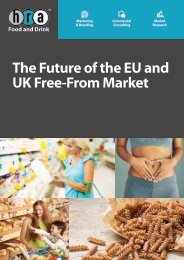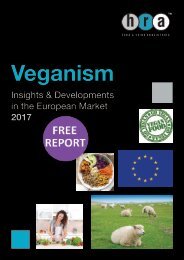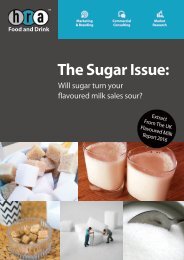Flavoured_Milk_Free
The backdrop to the UK flavoured milk market is one of relentless change. The removal of the EU milk quotas, the transition by emerging economies to a Western-style diet, the upcoming introduction of the ‘sugar tax’ and the booming sports nutrition industry are all aspects of change that create both challenges and opportunities for the UK flavoured milk market. HRA Food and Drink has developed this report as a map to guide industry stakeholders. Although volume growth in 2014 was slightly lower than in previous years, the flavoured milk market still has plenty of room for product innovation in the future.
The backdrop to the UK flavoured milk market is one of relentless change. The removal of the EU milk quotas, the transition by emerging economies to a Western-style diet, the upcoming introduction of the ‘sugar tax’ and the booming sports nutrition industry are all aspects of change that create both challenges and opportunities for the UK flavoured milk market.
HRA Food and Drink has developed this report as a map to guide industry stakeholders. Although volume growth in 2014 was slightly lower than in previous years, the flavoured milk market still has plenty of room for product innovation in the future.
Create successful ePaper yourself
Turn your PDF publications into a flip-book with our unique Google optimized e-Paper software.
UK FLAVOURED MILK MARKET 2017 & BEYOND<br />
There is clearly an opportunity for products to capitalise on the growing taste for<br />
‘superfood’ ingredients such as ancient grains, blueberry, pomegranate, chia seeds, and<br />
perhaps even vegetables such as kale and spinach.<br />
While major reformulation will likely require investment in terms of processing equipment,<br />
the returns to be made from being the first brand offering premium, healthy flavoured milks<br />
aimed at adults are likely to make significant returns on investment.<br />
8.18 Technological: development of innovative sweeteners<br />
One factor restraining growth of flavoured milk products is their high sugar content. High<br />
sugar-content is becoming an issue which is likely to deter consumers from making<br />
purchases.<br />
Generally there are two main options when it comes to reducing sugar content in flavoured<br />
milk: reducing lactose or using sweeteners to replace sugar. Of course, there is also a third<br />
option of simply reducing sugar to a point of still maintaining an acceptable taste. While<br />
this has worked for almond milk, it is more difficult for flavoured milk which is consumed<br />
on its own so needs a strong individual taste.<br />
To view please<br />
purchase full report<br />
Figure 8.26: Examples of sugar reduction strategies in milk drinks<br />
162<br />
© 2016 Teepee Limited. All Rights Reserved.







